
Sard Gem: Info, Nkyerɛase, & Abusuabɔ a ɛda Sardonyx & Carnelian ntam
 Sard yɛ chalcedony aboɔden abo a ɛyɛ hann a ɛyɛ kɔkɔɔ-biribiri kosi bruu a wɔdɔ no fi tete. Ɔbo no ne ne mfɛfo chalcedony aboɔden abo carnelian ne onyx wɔ abusuabɔ, na abiɛsa no nyinaa yɛ nneɛma a agye din a wɔde di adwini.
Sard yɛ chalcedony aboɔden abo a ɛyɛ hann a ɛyɛ kɔkɔɔ-biribiri kosi bruu a wɔdɔ no fi tete. Ɔbo no ne ne mfɛfo chalcedony aboɔden abo carnelian ne onyx wɔ abusuabɔ, na abiɛsa no nyinaa yɛ nneɛma a agye din a wɔde di adwini.
Sɛ ɛte sɛ nea ɔbo bi a wɔato din “sard” nte sɛ wo su a, mmɔ no mprempren ara. Ɛmfa ho ne din a ebetumi ayɛ nea ɛyɛ nwonwa no, sard yɛ aboɔden abo a ɛyɛ fɛ. Ne osutɔbere mu kɔla ne asase so su ma ɛyɛ pɛpɛɛpɛ ma obiara a ɔrehwehwɛ asase so vibes bi!
Edu akwankyerɛ yi awiei no, wubehu biribiara a ɛsɛ sɛ wuhu fa sard aboɔden abo a wɔde di dwuma, ayaresa ahoɔden, ne bo, nea ɛkyerɛ, ne nea ɛkeka ho ho!
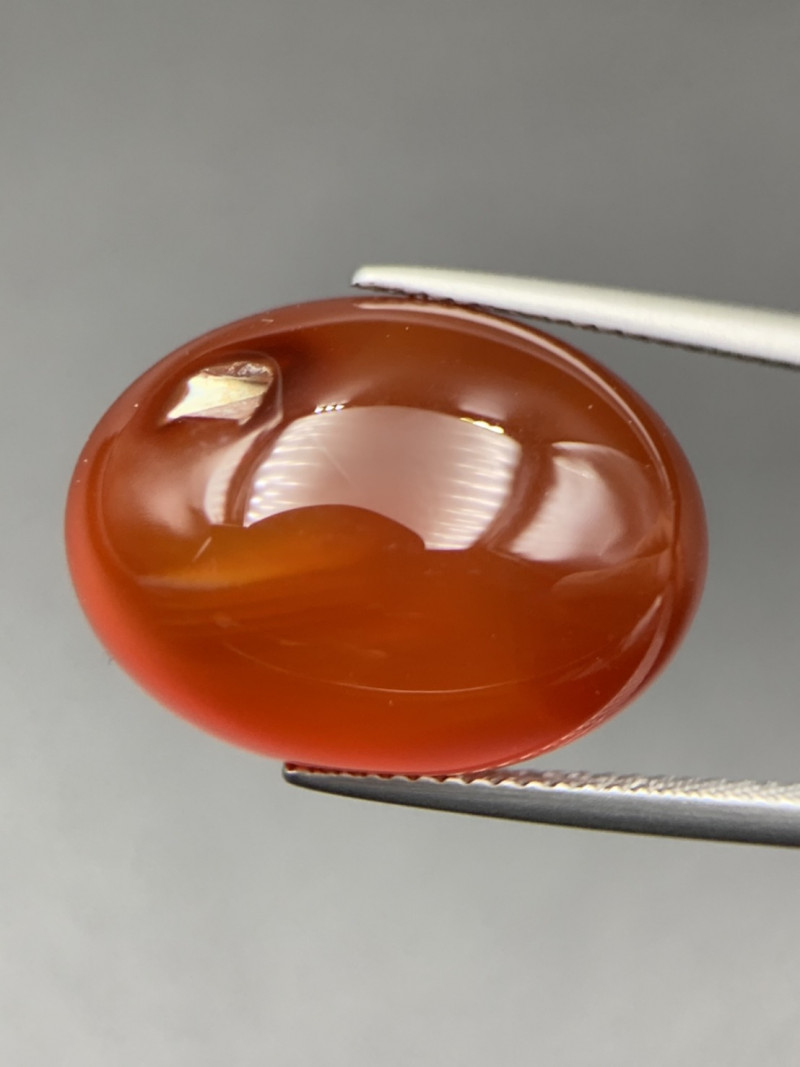
Dɛn ne Sard Stone?
Sard yɛ ɔbo a emu dɔ na ɛyɛ pɛ a wonim no kɛse sɛ ɛne onyx fra ma ɛyɛ sardonyx.
Wɔ abakɔsɛm mu no, na sard ne sardonyx nyinaa ka aboɔden abo a ne bo yɛ fã bi a agye din sen biara no ho , a ɛkame ayɛ sɛ wɔde yɛ nsɔano na wɔde siesie nneɛma ahorow, a nyamesom mu nneɛma ka ho.
Tete Romafo ne Helafo kaa sard ho asɛm sɛ “ogya bo” —a ɛyɛ pɛpɛɛpɛ ma ne gyinabea sɛ nsoromma bo ma Mars ne zodiac ɔbo ma fiesty Scorpio!
Ebia wɔwoo wo wɔ ahohuru bere a ogya hyew wom mu Sardonyx yɛ w’awobo , a wɔkyerɛ sɛ egyina hɔ ma aware mu anigye. Nokwarem no, na ɛyɛ August awobo a edi kan, a wɔde sii hɔ wɔ 1700 mfe no mu Poland.
Sɛ yɛreka aware mu anigye ho asɛm a, aboɔden abo a ɛte saa ara a wɔfrɛ no carnelian no kae ayeforohyia afe a ɛto so 17 , na sard yɛ ade kɛse a wɔde si ananmu.
Sɛ yɛkɔ so a, dɛn ne sard mineral su ahorow?
Sard Nkyerɛkyerɛmu & Su ahorow
Sard mineral no yɛ chalcedony ahorow ahorow a ɛyɛ quartz a ɛyɛ microcrystalline . Wɔde silica na ɛyɛ chalcedony aboɔden abo no. Wɔte sɛ macrocrystalline quartz stones (sɛ nhwɛso no amethyst) nanso wɔyɛ compact, fine-grained masses a crystals sua dodo sɛ wobehu.
Nea ɛnte sɛ chalcedony subtypes pii te sɛ agate anaa jasper akuw no, sard chalcedony ɔbo no nni kɔla a wɔde abɔ mu.
Sard mineral ahorow no nyinaa ni:
Mohs denden : 6.5-7
Kɔla : Kɔkɔɔ-biribiri, bruu
Ahwehwɛ nhyehyɛe : Trigonal
Luster : Vitreous (ahwehwɛ), srade, waxy, anaa resinous
Transparency : Ɛyɛ fã bi a ɛda adi kosi nea ɛnyɛ nea ɛda adi
Nneɛma a ɛma nneɛma yɛ mmerɛw : 1.53-1.54
Nnipa dodow : 2.56-2.68
Cleavage : Biara nni hɔ
Abubu : Conchoidal anaa granular
Streak : Ɛyɛ fitaa
Luminescence : Biara nni hɔ
Wunim sard no mineral afã, nanso sɛ wode toto carnelian ne sardonyx ho a, ɛyɛ dɛn?
Sard ne Carnelian ne Sardonyx ntam
Wɔ chalcedony a wɔde afrafra mu no, adwene a ɛyɛ basaa kɛse ne sard, sardonyx, ne carnelian . Ɛnyɛ sɛ wɔn nyinaa yɛ chalcedonies nko, na mmom wɔwɔ kɔla a ɛyɛ hyew a ɛte saa ara a ɛyɛ kɔkɔɔ, borɔdɔma, kɔkɔɔ, ne bruu.
Sɛ yɛto din nkutoo a, sard ne sardonyx taa tow nkurɔfo gu ma wɔyɛ loop. Momma yenni kan nsɛe wɔn nsonsonoe no.
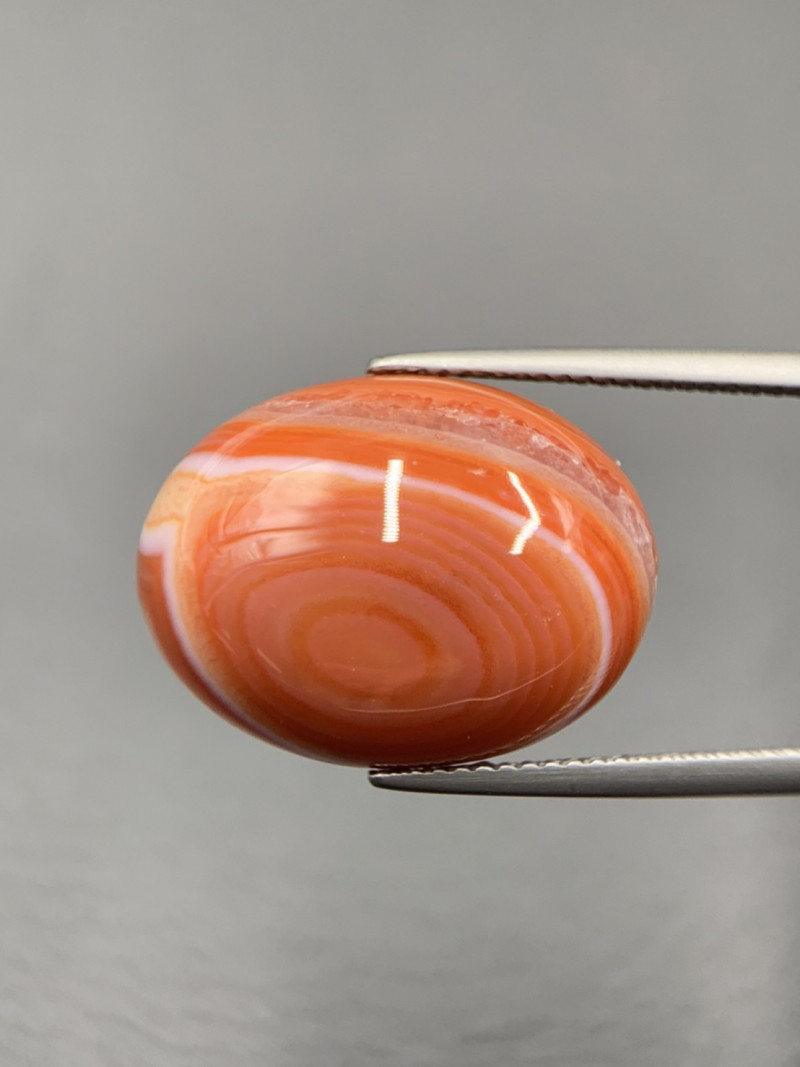 Mfonini no so: Sardonyx
Mfonini no so: Sardonyx
Sard ne Sardonyx ntam asɛm
Sardonyx yɛ onyx ɔbo bi (chalcedony ahorow foforo) a wɔde sard ayɛ, na ɛma kɔla a wɔde abɔ a ɛtaa yɛ kɔkɔɔ, borɔdɔma, ne fitaa.
Ade a ɛyɛ mmerɛw sɛ wobehu nsonsonoe a ɛda sard ne sardonyx ntam ne kɔla a enni sard no. Nea ɛka ho no, sardonyx wɔ hann ne nea ɛhyerɛn a adi afra, bere a sard taa yɛ tuntum.
Ebia wubesusuw sɛ sard ne sardonyx wɔ abusuabɔ kɛse sen sard ne carnelian , nanso ɛyɛ nwonwa sɛ ɛnte saa!
Enti, nsonsonoe bɛn na ɛda sard ne carnelian ntam?
 Mfonini no so: Carnelian
Mfonini no so: Carnelian
Sard ne Carnelian ntam asɛm no
Carnelian yɛ chalcedony kɔkɔɔ, borɔdɔma, anaa bruu a ɛtaa yɛ kɔla a ɛyɛ den nanso ɛtɔ da bi a ɛkyerɛ kɔla zoning.
Carnelian ne sard kɔla nkutoo na ɛma nsonsonoe da nsow, na ɛno mpo nyɛ nea ɛkɔ so pɛpɛɛpɛ bere nyinaa, efisɛ carnelian abo bi da sard kɔla adi.
Sɛ aban nsonsonoe biara nni hɔ a, “sard” ne “carnelian” betumi ayɛ nsɛmfua a ɛne ne ho di nsɛ wɔ mfiridwuma mu. Ne nyinaa mu no, nea nnipa pii gye tom ne sɛ sard wɔ kɔla tuntum na ɛyɛ bruu sen carnelian.
Ɛno ka carnelian ne sardonyx ntease ho wɔ mineralogically, nanso metaphysical sard gemstone ntease no nso ɛ?

Sard Nkyerɛase & Abakɔsɛm
Sard anya ntease ahorow a wɔkyerɛ sɛ ɛwɔ mu fi tete. Saa mmere no mu no, na sard yɛ akokoduru, ahobammɔ, ne anigye ho sɛnkyerɛnne. Saa ara na na sardonyx agude yɛ agude a wɔde bɔ wɔn ho ban a tete Misrifo, Indiafo, ne Romafo hyɛ.
Abakɔsɛm mu nkyerɛase afoforo a ɛfa sard ntease ne ne tumi ho no bi ne:
Ahobammɔ wɔ ɔko mu — Roma asraafo
Warding off malevolent ahonhom & nsɛmmɔnedi a wɔbrɛ ase — Misrifo
Ahobammɔ a wɔbɔ fi abayisɛm ho — Mesopotamia & India
Ohia a wosiw ano, nkonimdi & anigye a wɔde bɛba — Ɔkɔmhyɛni Muhammad
Venus, ɔdɔ nyamewa — Roma mmea tumi a wobenya
Ɔkasa mu nimdeɛ a ɛrenya nkɔanim — Europafo a na wɔwɔ Renaissance bere so
Asɛmfua “sard” no di asɛmfua biara a wɔde frɛ quartz a “ahwehwɛ” nka ho no anim ankasa. Wɔ Bible Apam Dedaw mu no, sard ne abo 12 a wɔabobɔ din wɔ Aaron (anaa Ɔsɔfo Panyin) Ntama mu no mu nea edi kan. Wɔka ho asɛm nso sɛ ɛyɛ honhom fam ahoɔden ho sɛnkyerɛnne.
Tete Abakɔsɛm
Tete Roma nhomanimfo Pliny Ɔpanyin kyerɛw sard (anaa “sardius”) ho kyerɛwtohɔ a edi kan a aban mpanyimfo de mae wɔ ne nhoma The Natural History 77 Y.B. Pliny kae sɛ ɔbo no din hyɛ ɔbo no a wɔkyerɛ sɛ wodii kan huu wɔ Sardis (nnɛyi Sart, Turkey) no anuonyam.
Nanso, nhomanimfo pii gye di sɛ efi Persia asɛmfua sered , a ɛkyerɛ “kɔkɔɔ-kɔkɔɔ,” efisɛ na wɔde dii dwuma ansa na Romafo reba no. Wɔde Roma ahemman no sii hɔ wɔ afe 625 A.Y.B., nanso wofii ase tutuu sard wɔ Kɔbere Mmere no mu, (3300 A.Y.B.-1200 A.Y.B.). Sɛnea wɔde sard ne sardyx di dwuma no fi mfe 4,000 akyi wɔ tete Misraim.
Sɛnea tete Atene kasafo Demostratus kyerɛ no, Romani a odi kan a ɔhyɛɛ sard ne Africanus, afeha a ɛto so 2 A.Y.B. Demostratus de Africanus ho anuonyam mae sɛ ɔno na ɔmaa sard nyaa din wɔ Rome. afeha a ɛto so 1 Y.B.

Sard Nkawa a Wɔde Yɛ Adwuma
Nneɛma a edi kan a wɔde di dwuma wɔ sard mu na wɔtaa de di dwuma kɛse no mu biako ne nkaa a wɔakyerɛw so. Nanso dɛn ne sard ring, na dɛn nti na ɛho hia?
Ná Sard nkaa taa yɛ signet nkaa, a wɔasen no mu sɛ cameo a wɔde mia wax nsɔano so —te sɛ scarabs , sard ade foforo a agye din.
Nhwɛsoɔ baako a agye din ne sard anaa carnelian signet ring a wɔhyɛeɛ wɔ afeha a ɛtɔ so nson Y.B. Wɔbɔ amanneɛ sɛ ofii ase hyɛɛ no wɔ afe 630 Y.B.
Ɔsan nso de dii dwuma de sɔɔ nkrataa a wɔde kɔmaa Romafo (a wɔkenkan nkrataa a wɔasɔ ano nkutoo) ano na ɔmaa wɔkyerɛw kasasin “Muhammad Allah Somafo” wɔ Arabic kasa mu. Saa mpɛtea yi a wɔfrɛ no aqeeq mpɛtea no bɛyɛɛ Nkramofo agyiraehyɛde a ɛho hia a Nkramofo mmarima ne mmea hyɛ. Pii wɔ wɔn sard nkaa a wɔde mpaebɔ anaa aniwa bɔne adwini.
Nnɛyi Abakɔsɛm
Wɔfrɛɛ sard ne carnelian nyinaa “sardion” kosii Mfinimfini Mmere no mu (500-1500 Y.B.). Wɔ 1600 mfe no mu no, sard puei wɔ ntama a ɛte sɛ mosaic a wɔfrɛ no parchin kari (anaa pietra dura) a ɛwɔ Taj Mahal a ɛwɔ India no mu.
Sard cabochons nso puei wɔ afeha a ɛto so 16 mu agude ɔhaha pii a ɛwɔ “Cheapside Hoard” a wohuu wɔ England wɔ 1912. Wɔ Victoria England no, na sard yɛ ade a wɔpɛ sɛ wodi adwini a wɔde yɛ agude ne nsɔano.
Saa bere yi nyinaa, wɔ 1800 mfe no mu Russia no, agude ho nimdefo a wɔkamfo no Gustav Fabergé dii Cossackfo ahoni a wɔde sard ayɛ maa Russia ahemfo. Eduu 1900 mfe no mfiase no, sardonyx adwini a efi Russia trɛwee bɛyɛɛ nsusuwso ne nkrataa a wɔde kari nneɛma a wɔde kɔ amannɔne nso kɔɔ wiase nyinaa.
Ɛnnɛ, sard nni din a ɛte saa ara. Wɔ ayaresa mu no, dɛn na wɔde sard di dwuma nnɛ?

Sard Ayaresa Nneɛma
Chalcedony ahorow nyinaa, ne aboɔden abo a wɔde yɛ saa asɛm no, betumi ayɛ abo a ɛsa yare . Ɛwom sɛ carnelian agye din kɛse wɔ ayaresa mu mprempren de, nanso sard da so ara yɛ ayaresa ahwehwɛ a ano yɛ den! Sɛ́ aboɔden abo a ɛyɛ bruu titiriw no , sard fi awosu mu betumi ama asase, akanyan, na agyina pintinn.
Sɛ wopɛ honam ne nkate fam ayaresa a, dɛn na wɔde sardyx ahwehwɛ no di dwuma?
Nipadua mu Ayaresa
Abakɔsɛm mu no, na nkurɔfo de sard di dwuma de bɔ wɔn ho ban fi awuduru ne nkoekoemmoa anaa mmoa a awuduru wom a wɔbɛka wɔn ho. Ná agye din nso sɛ wɔde ko tia dae bɔne anaa nna ho nsɛm afoforo.
Wɔ mmea fam no, wɔakamfo sard akyerɛ bere tenten sɛ ɛma awo yɛ mmerɛw na ɛma nyinsɛn a ɛnyɛ yaw pii no yɛ mmerɛw.
Nkate mu Ayaresa
Wɔ nkate fam no, sard ɔbo no so ba wɔn a wɔrepere wɔn ho adwenem naayɛ, adwemmɔne, anaa nneɛma a wɔyɛ no ntɛmntɛm no so mfaso. Wɔkyerɛ sɛ ɛde ahotoso, ahosodi, ne anigye besi saa nkate horow yi ananmu.
Ebia Sard nso bɛboa wɔ abusuabɔ mu, ɔdɔ ne platonic nyinaa. Wogye di sɛ ɛma nkitahodi a ɛyɛ nokware yɛ mmerɛw, ɛhyɛ mmerɛwyɛ ho nkuran, na ɛma pɛsɛmenkominya yɛ kɛse, na ɛma wonya fapem a ɛyɛ den ma nkɔso.
Sɛ yɛreka fapem a ɛyɛ den ho asɛm a...
Chakra Ayaresa
Sard yɛ chakra ɔbo ma ntini chakra, fapem a ɛma ahoɔden, nkitahodi, ne ankorankoro nyin. Wɔde chakra ahwehwɛ di dwuma de di chakra (ahoɔden beae) a wɔasiw ano no nsunsuanso bɔne ho dwuma denam san a wɔde bɛkari pɛ no so.
Esiane sɛ ɛwɔ w’akyi berɛmo ase nti, wo ntini chakra no betumi asiw sɛ wo ho yɛ wo yaw wɔ wo akyi berɛmo mu anaasɛ wote nka sɛ wo ne afoforo nni abusuabɔ wɔ nkate fam a. Sɛ wode sard di dwuma de kari pɛ wie a, wubetumi ate nka sɛ wowɔ ahotoso, wowɔ fam, na wowɔ ahobammɔ.
Nokwarem no, wobɛpɛ nso sɛ wunya awerɛhyem sɛ worenya ade pa bere a woretɔ sard aboɔden abo no. Momma yɛnkɔ nneɛma a ɛsom bo a ɛsɛ sɛ yɛhwehwɛ no mu!
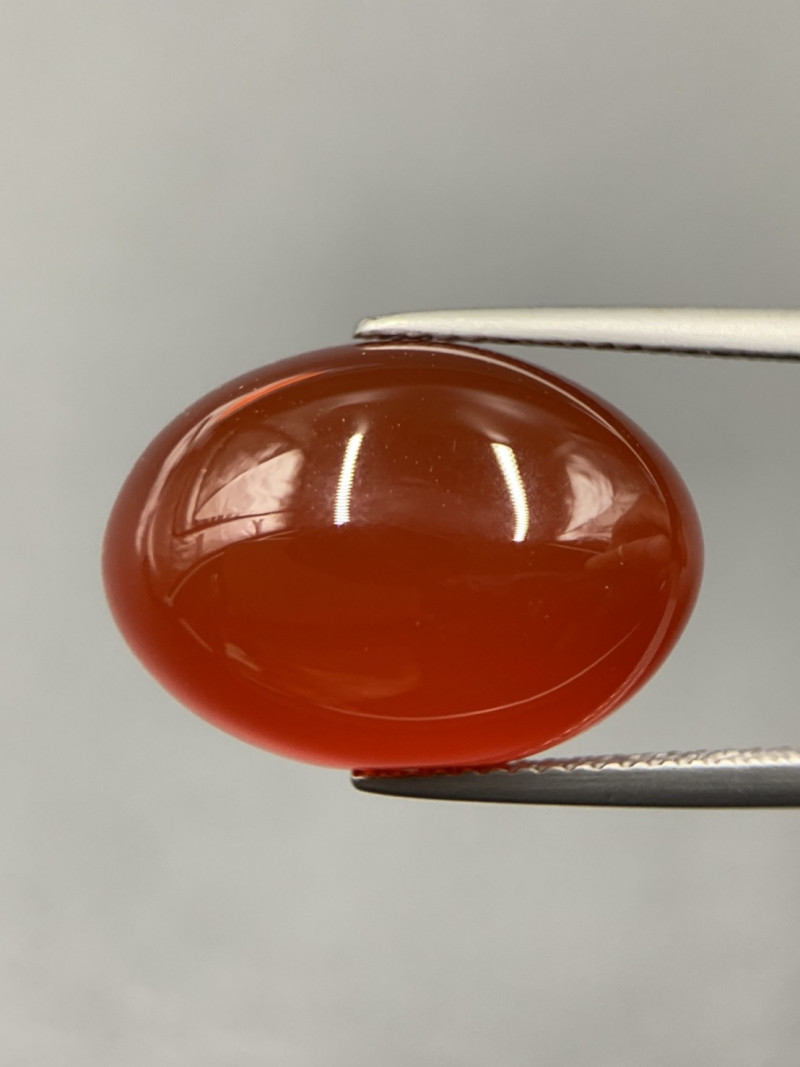
Sard Aboɔden abo Nneɛma a Ɛwɔ Hɔ
Sɛ́ aboɔden abo a ɛdɔɔso no, nea ɛntaa nsi nni dwuma biara wɔ sard bo mu sɛnea ɛyɛ ma abo afoforo no. Aboɔden abo a ɛwɔ ne bo so nkɛntɛnso ampa ne kɔla, nea wɔatwitwa, nea ɛda adi pefee, ne sɛnea wɔde sa yare.
Ahosuo
Sard taa yɛ kɔkɔɔ kosi bruu, na ɛtaa yɛ borɔdɔma ne kɔkɔɔ ase na ɛtɔ mmere bi a ɛyɛ fitaa anaa tuntum a ɛka ho a ɛte sɛ mununkum. Ɔbo no kɔla fi efĩ a ɛwɔ dade oxide a ɛtaa yɛ limonite mu. Kɔla a ɛhyerɛn no som bo kɛse, titiriw sard a ɛyɛ hann a ɛyɛ kɔkɔɔ a ɛhyerɛn wɔ hann tẽẽ mu.
Twa
Ɛwom sɛ adwini yɛ nea wɔpaw wɔ amanne kwan so de, nanso sard nhwiren na abu so kɛse nnɛ. Sard cabochons , a wɔtaa de yɛ nkaa ne pendant nso abu so. Ebia wubehu asinasin a ɛwɔ afã horow , nanso eyinom ho yɛ na.
Nneɛma a wɔyɛ no pefee
Ɔbo no yɛ nea ɛyɛ hann kosi nea ɛnyɛ hann, nanso mpɛn pii no, sard a ɛyɛ hann na ɛhyɛ bo a ɛkorɔn sen biara.
Ayaresa ahorow
Na Chalcedonies ka aboɔden abo a edi kan a wɔde nsa ayɛ ho adwuma wɔ abakɔsɛm mu — wohuu carnelian a ɛyɛ hyew wɔ 1300-A.Y.B.
Ade biako a wɔde yɛ kɔla (a ɛntaa nsi nnɛ) ne sɛ wɔde chalcedony ɔbo bi bɛhyɛ ɛwo anaa asikre aduru mu na wɔde ayɛ hyew. Ɛnnɛ, ɛtɔ mmere bi a wɔma sard a ne kɔla yɛ tuntum no yɛ hyew ma ɛyɛ hare, efisɛ ɔhyew ma dade efĩ no yɛ oxide.
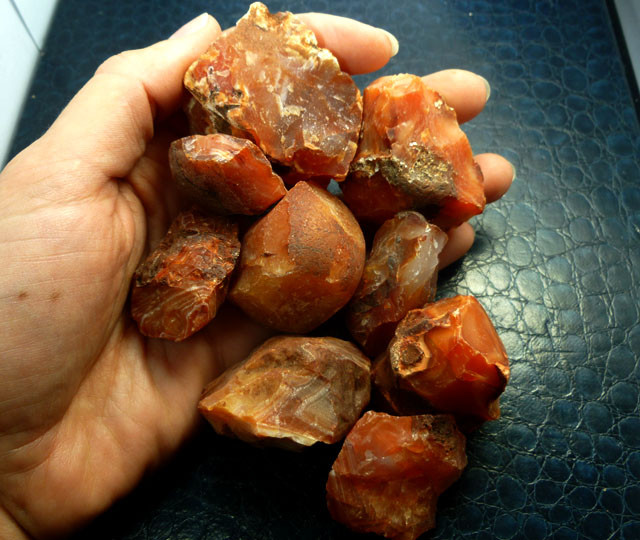
Sard Formation & Nneɛma a Wɔde Yɛ Adwuma
Te sɛ chalcedonies nyinaa no, sard ba wɔ ɔhyew a ɛba fam koraa mu bere a asase ase nsu a ɛde silica kɔ no kɔ abotan mu mpaapaemu mu no. Nsu no betumi apete nneɛma nso, na ama silica no asi wɔn ananmu bere a ɛyɛ den ma ɛbɛyɛ sard no.
Mpɛn pii no, sard ba bɛn Asase ani wɔ abotan a ɛyɛ hyew mu bere a abotan no ankasa yɛ nwini no, efisɛ wɔatow no tuo akɔ soro sɛ magma. Nsu de silica gu mmeae a ɛhɔ yɛ petee wɔ ɔbotan no mu, afei ɛyɛ nwini, na ɛma silica no yɛ den ma ɛbɛyɛ sard. Ansa na ɛbɛyɛ den koraa no, dade oxide hwirew mu ma ɛyɛ dɔte.
Mmeae a Wɔtu Tuo
India agye din sɛ wɔyɛ sard ne sardonyx abo a ɛkorɔn sen biara.
Sard nso fi:
Brazil
Germany
Italy
Mongolia na ɛwɔ hɔ
Peru
Poland
Russia
Sri Lanka na ɛwɔ hɔ
Uruguay na ɛwɔ hɔ
U.S.A. (California, Connecticut, New Jersey, New Mexico) Ɔde ne nsa kyerɛɛ ne so, na ɔde ne nsa kyerɛɛ ne so bio.
Awiei koraa no, sard bo yɛ ahe? Asɛmpa: ɛyɛ super affordable!

Sard Bo & Ne Bo
Sɛ wɔtɔn no kɛse a, sard cabochons a emu duru fi 1 ct kosi bɛyɛ 18 cts biara bo bɛyɛ $14. Faceted sard gems fi ase fi $5 na mpɛn pii no ɛntra $15, gye abo bi a ne kɔla yɛ hare bɛyɛ $40.
Wɔ agude mu no, sard pendants taa kɔ bɛyɛ $30-$40. Nea ɛka nneɛma a ne bo yɛ den ho ne aboɔden abo a ne bo yɛ den te sɛ abohene .
Signet nkaa bo yɛ den, efisɛ dodow no ara yɛ tete de, wɔde nsa ayɛ, na wɔde asi sika kɔkɔɔ a ɛyɛ fɛ mu . Dwetɛ sterling nkaa no wɔ ase, bɛyɛ $50-$100, bere a sika kɔkɔɔ a wɔde ahyɛ mu nkaa no fi $270 kosi $8,000 anaa nea ɛboro saa.
Sard Hwɛ ne Nsiesiei
Sard aboɔden abo a wɔhwɛ so yɛ mmerɛw, efisɛ ɛnyɛ mmerɛw sɛ ebebubu. Nanso, ebetumi ayɛ chip afi ultrasonic cleaners mu, enti mfa saa kwan a wɔfa so siesie no nni dwuma. Mmom no, fa ntama a ɛyɛ mmerɛw a microfiber ne nsu a ɛyɛ hyew a wɔde samina a ɛnyɛ den afra di dwuma. Fa ntama foforo a ɛyɛ mmerɛw ma ɛyow na fa sie baabi a ɛso tew wɔ aboɔden abo afoforo ho na amma ansɛe.
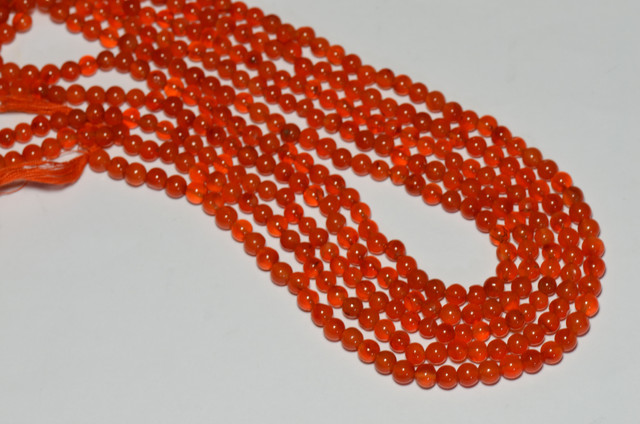
Wopɛ Tete Ademude a Wotumi Nya?
Mfa ne din mmu aboɔden abo bi atɛn — efisɛ sard tia akwanhwɛ! Ɛntaa mma sɛ aboɔden abo a ɛwɔ abakɔsɛm tenten saa a asiesie adehye ne daafo nyinaa nyinaa, nanso sard yɛ anomaly a eye sen biara.
Sɛ yɛbɛfa German anwensɛm kyerɛwfo Johann Wolfgang von Goethe asɛm a ɔreka sard ho asɛm aka a, “Ɔbea fi aboɔden abo a ɛte saa mu nya anidaso a ɛyɛ dɛ ne awerɛkyekye wɔ ne yaw mu.”
Sɛ worehwehwɛ anansesɛm mu aboɔden abo a wode bɛbɔ wo ho ban, anigye, ne nkonimdi a, dan kɔ sard ahwehwɛ a wɔasɔ ahwɛ no so!
搜尋Gemstone Encyclopedia
相關拍賣
相關文章
Obiara wɔ aboɔden abo a ɛne ne nsoromma agyiraehyɛde hyia. Wɔsan frɛ eyinom sɛ wo Nsoromma Abo. Sua pii fa saa abo yi ho na hwehwɛ nea wo Nsoromma Abo no yɛ.
10th May 2018
Mfiase no na wɔde Awo Abo anaa aboɔden abo no bata nsoromma mu hwɛ anaa ɔsram a ankorankoro bi awo ho. Hwehwɛ nea wo bo no yɛ na hwɛ abo a yɛwɔ sɛ yɛtɔn no
8th Feb 2021
Gem Rock Auctions wɔ Certified Gemstones a ɛso sen biara wɔ intanɛt so no mu biako. Hwehwɛ aboɔden abo sɔhwɛ afiri a wɔapene so yi mu.
24th Jul 2018
最新的文章
Chrysanthemum nhwiren abo yɛ abɔde mu anwonwade a ɛwɔ calcite, celestite, anaa andalusite nhwiren fitaa bi a wɔde asisi limestone tuntum anaa atɛkyɛ abo so.
13th Jan 2026
Rainbow lattice sunstone yɛ feldspar ahorow a ɛwɔ optical nsunsuanso abiɛsa fɛfɛ a efi nneɛma ahorow a wɔde ka ho a ɛwɔ hɔ no mu ba. Ɛyɛ ogya kɔla display ne lattice nsusuwso ma ɛyɛ coletor abohene a wɔntaa nhu!
12th Jan 2026
Thulite yɛ Norwayfo aboɔden abo a wɔntaa nhu a ɛda rosy hue a ɛyɛ hyew a efi zoisite mineral abusua a wɔtaa de di dwuma wɔ agude tebea ne pendants mu adi.
6th Jan 2026
文章類別
How To's is where you will find helpful articles from gem Rock Auctions on how to cut gemstones, select gemstones and buy gemstones.
9文章




